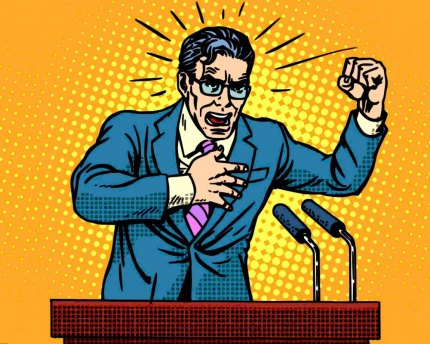Filibuster: A gridlock not sought by the founders

In a memorable scene, political neophyte Jefferson Smith, portrayed by Jimmy Stewart, launches into a filibuster, holding the floor for hours on end to postpone an appropriations bill.
But filibusters usually aren't done with such dramatic flare. And recently, the filibuster -- a tool to delay legislative action -- has been at the center of a debate over how to end political obstructionism that so often keeps Washington in a state of gridlock.
So, what is the filibuster and why does the U.S. Senate have it? Here's a compressed account with resources for further study.
What is a filibuster? The Merriam Webster dictionary website defines filibuster as "the use of extreme dilatory tactics (as by making long speeches) in an attempt to delay or prevent action especially in a legislative assembly." Filibuster is defined on the U.S. Senate website as the "action designed to prolong debate and delay or prevent a vote on a bill, resolution, amendment, or other debatable question." The word comes from a Dutch term for freebooter and the Spanish “filibusteros,” describing pirates raiding Caribbean islands, the Senate website explains.
How is a filibuster ended? Filibuster is ended with the cloture rule.
Cloture is the "closing or limitation of debate in a legislative body especially by calling for a vote," according to Merriam Webster online.
In the U.S. Senate, at least 16 senators must sign a cloture motion stating that in keeping with the rules of the Senate, they move to bring debate to a close, according to the Congressional Research Service.
So, is that it? No.
"The cloture motion then lies over until the second calendar day on which the Senate is in session," the Congressional Research Service explains. "For example, if the motion is filed on Monday, it lies over until Wednesday, assuming the Senate is in session daily. If the motion is filed on Friday, it lies over until Tuesday unless the Senate was in session on Saturday or Sunday."
OK. So you've waited a day. Now what?
Once the senators finally get to the motion,"it requires the votes of at least three-fifths of all Senators (normally 60 votes) to invoke cloture," according to the Congressional Research Service.
Have exceptions to the filibuster been made?
Indeed. The Brennan Center points out, "In 2013, Democrats altered filibuster rules so that only a simple majority is required to end debate on nominees to lower courts and administration positions. In 2017, Republicans extended that change to Supreme Court nominations."
Was the filibuster the brainchild of the Founding Fathers? No.
But the tactic of talking to waste time has been around since the beginning. "Using long speeches to delay action on legislation appeared in the very first session of the Senate," according to the U.S. Senate website. "On Sept. 22, 1789, Pennsylvania Senator William Maclay wrote in his diary that the 'design of the Virginians . . . was to talk away the time, so that we could not get the bill passed.'"
Originally, both the House and the Senate had nearly identical rule books. The House has kept a rule that allows a simple majority to cut off debate, explains Sarah A. Binder on the website for the Brookings Institution. In 1805, the Senate edited its rule book and dropped the rule. That made filibuster possible.
So what brought on the first successful filibuster?
It didn't happen until 1837. "A group of Whig senators who opposed President Andrew Jackson filibustered to prevent Jackson’s allies from expunging a resolution of censure against him," recounts the website History.com. In other words, the first successful filibuster was about politics, not policy.
Yes. "At one time, filibuster was the favorite weapon used by Southern senators to block civil rights legislation," explains the textbook, Government By the People by James MacGregor Burns, J.W. Peltason and Thomas E. Cronin (Prentice-Hall Inc.; 1984).
Have politicians debated filibuster before?
"Filibusters became more frequent in the late 19th and early 20th centuries, leading to serious debate about changing Senate rules to curtail the practice," the Senate's website explains.
At one point, senators had to talk to filibuster. That changed in 1974. The Senate "adopted a rule that gave the filibuster new strength. No longer would a filibuster delay all Senate business," recounts the Brennan Center for Justice. "Instead, new Senate procedure would create a dual-tracking system that allowed the body to toggle between different bills so that a bill facing a filibuster was kept on the back burner until a vote for cloture could be successful. This meant that no one observing the Senate would likely realize that a bill was being filibustered, since no one had to take the floor and stay there."
So, any senator can launch a filibuster and never have to worry about bathroom breaks.
The change, negotiated by Sen. Fritz Mondale, D-Minn., and Sen. James Pearson, R-Kansas, also reduced the number of senators present and voting for cloture from two-thirds to three-fifths -- from 67 to 60. Mondale had argued that the previous rule had "protected the right of debate at the expense of the right to decide," a website for the University of Minnesota recounts.
To know more:
- The Brennan Center for Justice: The Case Against the Filibuster, by Caroline Fredrickson, Oct. 30, 2020.
- Brookings Institute: The History of the Filibuster, by Sarah A. Binder, April 22, 2010.
- Congressional Research Service: Filibusters and Cloture in the Senate, April 7, 2017.
- Government By the People: The Filibuster Rule, by James MacGregor Burns, J.W. Peltason and Thomas E. Cronin (Prentice-Hall Inc.; 1984),
- History.com: Filibuster, by History.com Editors.
- Merriam-Webster online: Filibuster.
- PBS News Hour: How does the filibuster work? By Lisa Desjardins, Jan. 27, 2021.
- PolitiFact, a website of the Poynter Institute: The history of the filibuster as 'Jim Crow relic,' By Louis Jacobson, Aug. 4, 2020.
- United States Senate: About Filibusters and Cloture, Historical Overview.
- University of Minnesota: Walter F. Mondale, Filibuster, Cloture.

